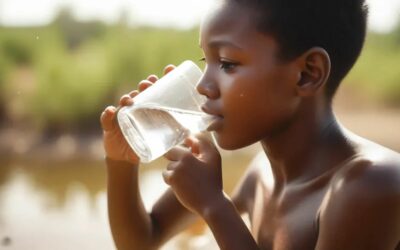The Impact of Water Availability on Good Health

Thirsty for Change: The Impact of Water Availability on Good Health
Water, the elixir of life, flows through our bodies and sustains us in ways we often take for granted. Yet, for millions across the globe, access to clean water remains a distant dream, with profound implications for health and well-being. Today, we delve into the crucial nexus between water availability and good health, exploring the far-reaching effects of water scarcity on individuals and communities worldwide.
Picture this: You wake up in the morning, ready to conquer the day ahead. But as you reach for a glass of water, you’re met with empty taps and dry reservoirs. This scenario isn’t just hypothetical for many; it’s a harsh reality faced by millions of people around the world, particularly in underserved regions of Africa, Asia, and beyond.
So, what happens when water becomes a luxury rather than a basic necessity? Let’s break it down:
-
Hydration and Vitality: Our bodies are composed of roughly 60% water, making hydration critical for maintaining bodily functions. Without an adequate supply of clean water, dehydration sets in, leading to fatigue, headaches, and impaired cognitive function. In communities where water is scarce, individuals, particularly children and the elderly, are at increased risk of dehydration-related illnesses and even death.
-
Sanitation and Disease Prevention: Access to clean water is fundamental to maintaining proper hygiene and sanitation practices. Without it, individuals are forced to resort to contaminated water sources, leading to a myriad of waterborne diseases such as cholera, typhoid, and dysentery. The lack of proper sanitation infrastructure further exacerbates the spread of illness, creating a vicious cycle of poor health outcomes.
-
Nutrition and Food Security: Agriculture, the backbone of many economies, relies heavily on water for irrigation and livestock hydration. In regions where water is scarce, crop yields suffer, leading to food insecurity and malnutrition. Moreover, water scarcity disrupts food production chains, driving up prices and further exacerbating poverty and hunger.
-
Mental and Emotional Well-being: Imagine the stress and anxiety of not knowing where your next drink of water will come from. In water-stressed communities, this is a daily reality, taking a toll on mental and emotional well-being. Water scarcity can also lead to social unrest and conflict as communities compete for dwindling resources, further destabilizing fragile regions.
But amidst these challenges, there is hope. Initiatives aimed at improving water infrastructure, promoting conservation practices, and fostering community-led solutions are making strides in addressing water scarcity and its impact on health. From rainwater harvesting projects to innovative water purification technologies, individuals and organizations are working tirelessly to ensure that clean water flows freely to all.
So, the next time you take a sip of water, pause to appreciate the privilege of access and consider how you can contribute to ensuring that everyone, everywhere, has the right to clean water and good health. After all, in a world thirsting for change, we each hold the power to make a difference.
